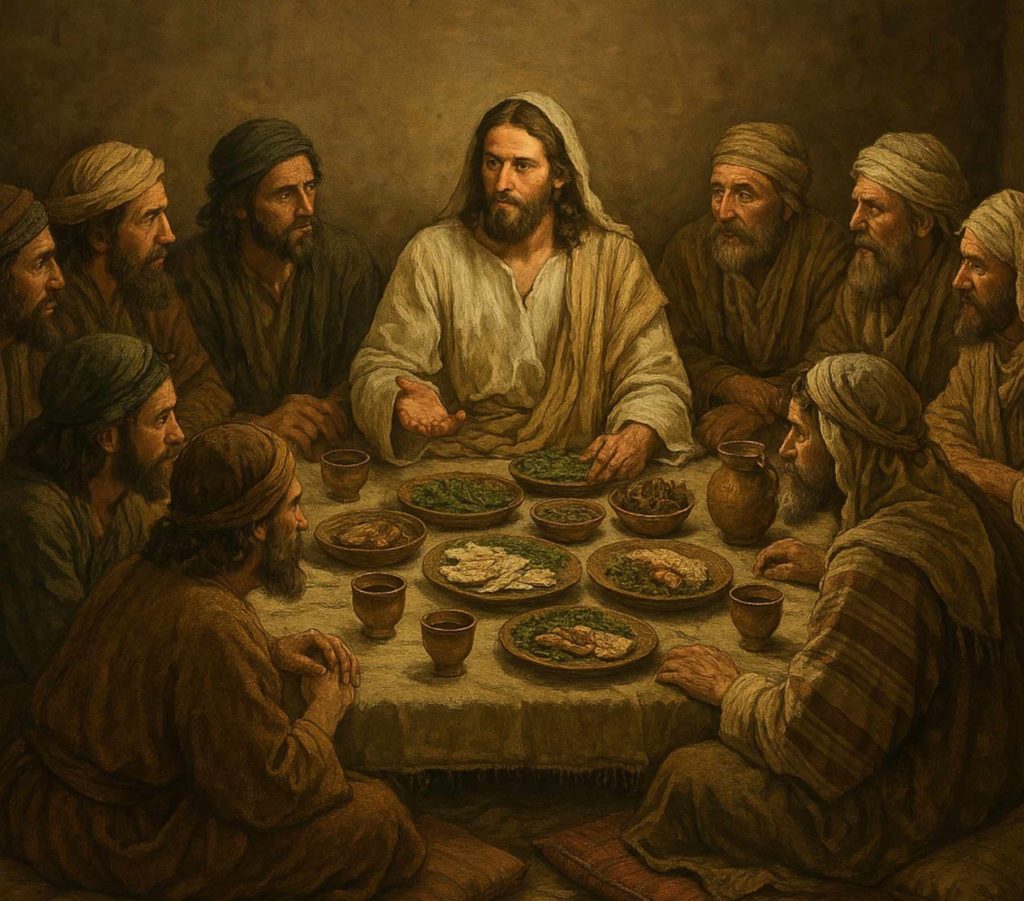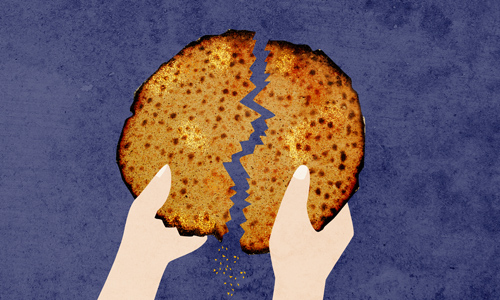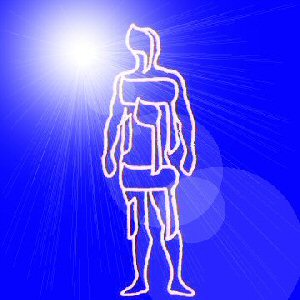Why Revelation was Written in Hebrew not Aramaic (or Greek)
By
James Scott Trimm
After forty years of research, I am prepared to announce my conclusion that the Book of Revelation was originally written in Hebrew, not Aramaic and definitely not Greek.
Today I was working on my Magnum Opus on the Hebrew and Aramaic origin of the New Testament, titled “Uncovering the Hebrew and Aramaic Foundations of the New Testament“. In my previous work, I theorized an Aramaic origin for this book, following the theories of Charles Cutler Torrey.
While preparing my chapter on the internal evidence in the Greek text or Revelation, I was comparing the views of R.B.Y. Scott, who proposed a Hebrew origin in his 1928 paper The Original Language of the Apocalypse and Charles Cutler Torrey who proposed Aramaic in his 1951 paper The Language and Date of the Apocalypse found in his book Documents of the Primitive Church.
Having spent over 35 years studying their papers, and studying the matter in depth myself, I have come to the conclusion that R.B.Y. Scott was correct.
1. The Linguistic Evidence Skews Toward Hebrew Over Aramaic
While both Hebrew and Aramaic exhibit Semitic grammatical features (e.g., construct chains, verb-initial clauses, lack of case endings), many of the specific anomalies in the Greek of Revelation align more precisely with Biblical Hebrew syntax rather than Galilean or Syriac Aramaic.
For example:
Construct phrases like “shame of your nakedness” (Rev. 3:18) reflect a Hebrew genitive chain, not Aramaic’s typical prepositional phrasing.
The distributive idiom אחד אחד (“one by one”) appears clearly in Hebrew texts (e.g., Daniel 8:3), while its use is less common in Aramaic with the same force.
Several mistranslations of Hebrew words (e.g., תרעם being read as “shepherd” rather than “break”) result from vowel ambiguities that are most plausible in unpointed Biblical Hebrew, not Aramaic where the forms differ more significantly.
2. Hebrew Is the More Likely Language of Early Jewish Apocalyptic Composition
Many of the apocalyptic writings from the Second Temple Period (e.g., portions of 1 Enoch, 4 Ezra, the Dead Sea Scrolls’ War Scroll and Hodayot) were written in Hebrew, not Aramaic. While Aramaic was the common spoken language, Hebrew remained the language of religious, legal, and apocalyptic texts—particularly in priestly and prophetic contexts.
Since Revelation is heavily apocalyptic and temple-themed, its alignment with Hebrew apocalyptic tradition suggests a Hebrew original, especially if one assumes it was originally written by or for a Jewish audience deeply immersed in Scripture.
3. The Nature of the Mistranslations Reflects Unpointed Hebrew, Not Aramaic
The most compelling internal evidence for a Hebrew Vorlage is in the mistranslation patterns:
The confusion between תְּרֹעֵם (“you shall break”) and תִּרְעֵם (“you shall shepherd”) is only possible in Hebrew.
Relative pronoun confusion (e.g., אשר → οἵτινες) shows a misreading of Hebrew syntactical structure.
The rendering of Hebrew idioms like נתן בלב (“to give into the heart”) reflects literal Hebrew phraseology, not typical Aramaic constructs.
4. The Glosses Refer to “Hebrew” — Not Aramaic
Passages like Revelation 16:16 refer to a place being named “in the Hebrew tongue,” not Aramaic. While this could mean “Jewish language” generically, the author (or translator) clearly identified the base language as Hebrew rather than Aramaic—even if modern scholars sometimes blur the distinction.
Conclusion: Aramaic Is Present, But Hebrew Best Fits the Evidence
To be fair, some features—like the possible use of the term κατήγωρ (accuser) from Rabbinic Hebrew/Aramaic, or general Semitic grammar—could come from either language. But the balance of the specific mistranslations, idioms, canonical intertexts, and historical context more strongly supports Hebrew as the original language of Revelation.
Was there an Aramaic “Layer” Between the Hebrew and the Greek?
Was the Hebrew translated to Aramaic and then to Greek, so that there would be an Aramaic “layer” between the two?
Based on the internal evidence in Revelation and the broader textual tradition, there is no strong reason to assume an intermediate Aramaic layer between the original Hebrew and the extant Greek.
1. Most Features in the Greek Point Directly to Hebrew, Not Aramaic
The Greek anomalies and mistranslations align most directly with:
Unpointed Biblical Hebrew (e.g., mistranslation of תרעם)
Hebrew idioms and syntax (e.g., construct chains, waw-consecutive)
Literal Hebrew phrasing (e.g., נתן בלב → “give into the heart”)
These examples do not require an Aramaic intermediary to explain them. If there were an Aramaic version, we would expect:
Aramaic grammar (e.g., more heavy use of the emphatic state)
Aramaic idioms (which differ from Hebrew in recognizable ways)
Aramaic loanwords or calques into Greek But those are largely absent or explainable as general Semiticisms.
2. No Surviving Textual Tradition Points to an Aramaic Revelation
We have:
Greek manuscripts (from early centuries)
But no ancient Aramaic manuscript or early patristic claim that Revelation existed in Aramaic. Those Aramaic versions that we do have are late, and the Peshitta canon does not include Revelation.
Contrast this with books like Matthew or John, where Aramaic may be proposed because of both internal evidence and external traditions or early versions (e.g., Peshitta, Old Syriac).
3. An Aramaic Layer Would Add, Not Solve, Problems
If Revelation had first been translated from Hebrew into Aramaic and then from Aramaic into Greek, we would expect to see:
A “smoothing” or reinterpretation of Hebrew idioms into Aramaic
Aramaic expressions misrendered in Greek
Evidence of two layers of mistranslation
But the evidence suggests direct misreading of Hebrew into Greek, such as:
Misidentification of Hebrew relative particles (אשר)
Confusion of homographs in Hebrew (תרעם) These are first-layer errors. There’s no need to posit a second translation step via Aramaic.
4. Theological and Literary Features Are Rooted in Hebrew Tradition
The imagery, apocalyptic motifs, and intertextual references in Revelation align best with:
Hebrew Tanakh (esp. Zechariah, Ezekiel, Daniel, Isaiah)
Hebrew prophetic diction
Temple-centered, judgment-oriented Hebrew idioms
This supports a Hebrew-speaking author, not one composing in Aramaic and relying on Targumic or midrashic Aramaic sources.
Conclusion:
The most parsimonious and textually justified model is:
Revelation was originally composed in Hebrew, and later translated—often mechanically—into Greek.
There is no strong textual or linguistic need to posit an Aramaic intermediary.
Of course, this does not deny that the author may have been bilingual or familiar with Aramaic (as most Jews were). But the translation into Greek came directly from Hebrew, not via Aramaic.
I can also announce that based on the line by line notes I have taken as I have studied this text for some forty years, I am confident that I can restore the original Hebrew of this book. I can see the Hebrew very clearly behind the Greek. Therefore I have now started work on a restoration of the original Hebrew of the Book of Revelation with a literal English translation and verse by verse notes explaining how I saw the Hebrew behind the Greek.
As many of you know, as I am getting older, I am focusing on writing my forty years of research into my Magnum Opus books. I am taking my thousands of pages of notes and compiling these into book. These are books I have literally been writing for forty years. I am preparing each of these books for sale on Amazon.
In the last thirty days I have published the following:
Returning to the Way: The Rebirth of Nazarene Judaism – This is my 500 page Magnum Opus the the restoration of Nazarene Judaism, the original Jewish followers of Yeshua as the Jewish Messiah of Judaism. This has been my life’s work.
The Mind of Shalom: The Lost Philosophy of Jewish Stoicism – This is my Magnum Opus on the ancient Jewish Stoics. To my knowledge it is the only book ever published on the subject.
Revised Book of Enoch Study Edition – This is the book quoted by Jude 1:14-15. This is translated, wherever possible, from the Aramaic fragments found at Qumran and has hundreds of scholarly footnotes. 2Enoch is included in an appendix.
Revised Book of Jasher Study Edition – This is the Lost book of the Bible cited in Joshua 10:13 and 2Sam. 1:18. This is a fresh translation from the original Hebrew, with hundreds of scholarly footnotes.
If you live outside the US check your own country’s Amazon cite.
Other books I am working on right now:
The Complete Commentary to the Book of Enoch – Right now this is over 350 8 1/2 x 11 pages. It will be much, much longer in a trade paperback size. The rough draft is complete and I am cleaning it up.
Uncovering the Hebrew and Aramaic Foundations of the New Testament – This will be my Magnum Opus on the Hebrew and Aramaic origin of the New Testament.
The Original Hebrew of the Book of Revelation Restored– In this book I will restore the original Hebrew of the Book of Revelation, with a literal English translation, an verse by verse notes, explaining the restoration process.
If this work resonates with you—if the preservation and restoration of the ancient Nazarene faith, the study of sacred Hebrew and Aramaic manuscripts, and the uncovering of the true origins of the New Testament matter to your heart—please consider supporting this mission. Every gift, large or small, helps us continue this vital research, publish lost truths, and awaken a deeper understanding of our spiritual heritage.
Partner with us in restoring what was once forgotten.
Donations can be sent by Paypal to donations@wnae.org or by the ling below thru Paypal, Zelle, GoFundMe
Thank you for standing with us.
Click HERE to donate











